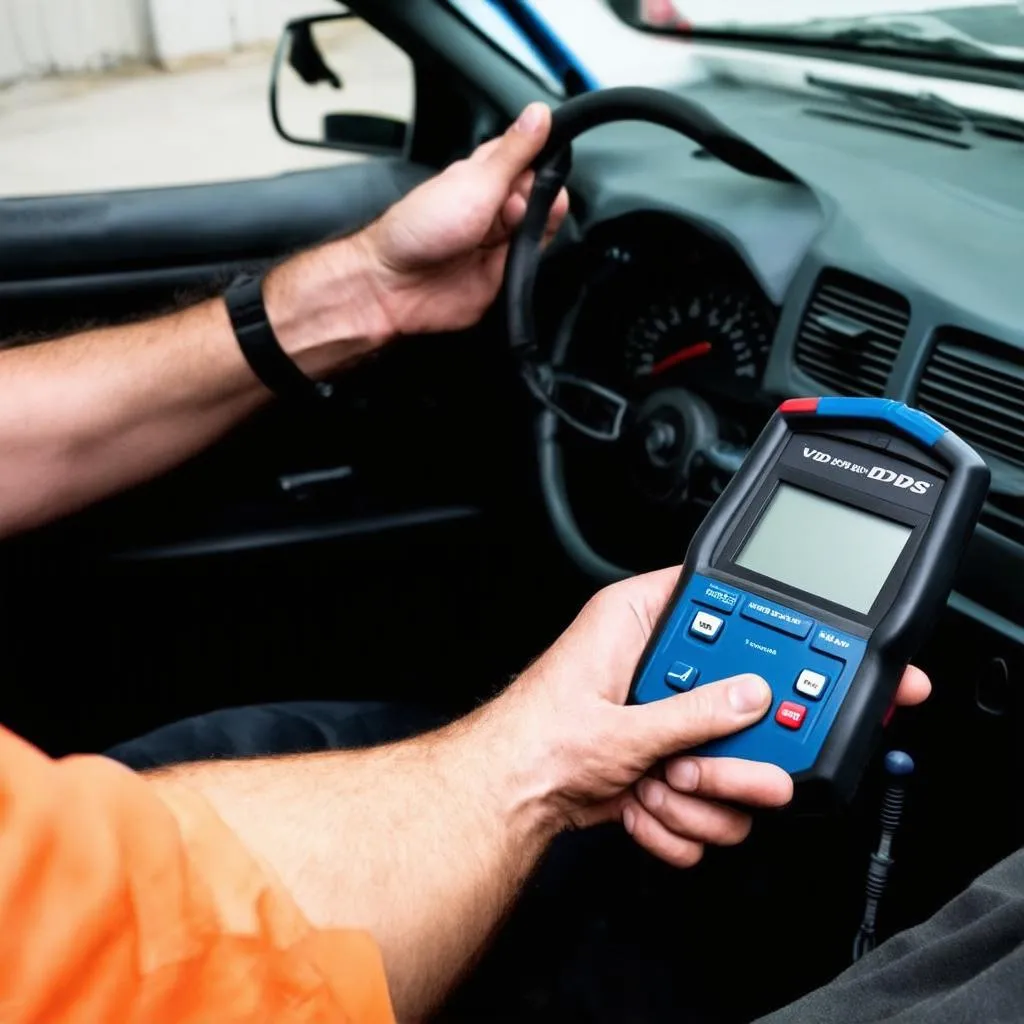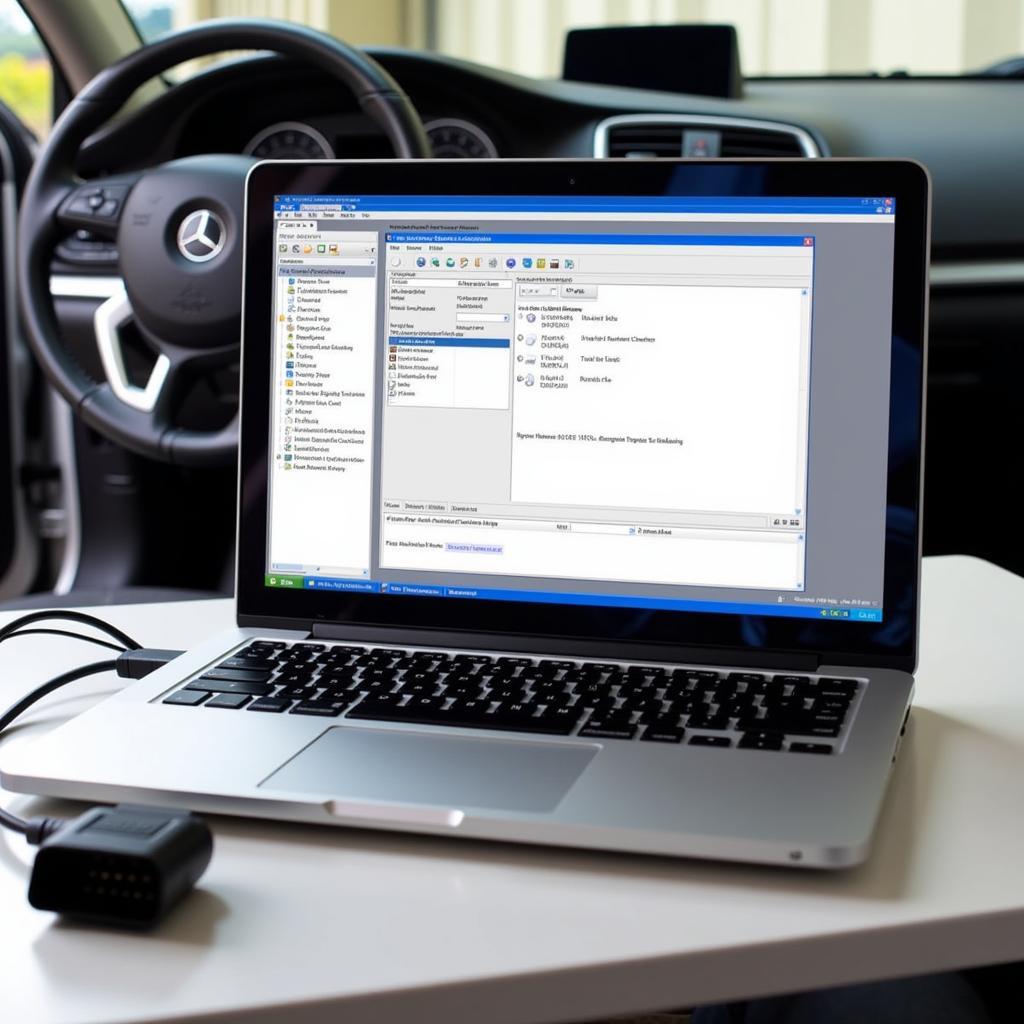Using VCDS, the powerful diagnostic software for Volkswagen, Audi, Seat, and Skoda vehicles, on a Mac presents unique challenges. Many users wonder about compatibility and the best ways to run this Windows-based software on macOS. This guide aims to provide a complete understanding of running VCDS on an Apple computer, addressing common questions, troubleshooting issues, and offering practical solutions.
Understanding the search intent behind “vcds apple” reveals users are likely seeking information on compatibility, software options, and setup instructions. They might be Mac owners who are already familiar with VCDS or are considering purchasing it. This guide will cater to both beginners and experienced users, covering everything from basic installation to advanced troubleshooting.
Running VCDS on macOS: Methods and Considerations
VCDS is natively designed for Windows operating systems. Therefore, running it on macOS requires intermediary software like virtual machines or Boot Camp. Each method has its own advantages and drawbacks, which we’ll explore below. Choosing the right method depends on individual needs and technical proficiency. You can find more information on vcds macos.
Virtual Machines: Parallels Desktop and VMware Fusion
Virtual machines allow you to run a separate Windows installation within macOS. Popular options include Parallels Desktop and VMware Fusion. These create a virtual environment where you can install and run VCDS as if you were on a Windows PC. This method offers flexibility and allows you to switch between operating systems seamlessly. However, performance can be affected by the Mac’s hardware resources allocated to the virtual machine.
Boot Camp: Dual-Booting Windows on Your Mac
Boot Camp allows you to partition your Mac’s hard drive and install Windows as a separate operating system. When you start your Mac, you can choose to boot into either macOS or Windows. This method provides the best performance for VCDS, as it runs natively on the hardware. However, it requires dedicating storage space and restarting your Mac to switch between operating systems. Learn more about using VCDS on a Mac by visiting vcds on mac.
Troubleshooting Common VCDS Issues on Mac
While running VCDS on Mac is achievable, users might encounter some challenges. Addressing these proactively ensures a smoother diagnostic experience.
Connection Issues and Driver Conflicts
One common issue is establishing a stable connection between the VCDS interface and the virtual machine or Boot Camp partition. Ensuring the correct drivers are installed within the Windows environment is crucial. Sometimes, driver conflicts can arise, requiring manual installation or troubleshooting.
Performance Limitations and Optimization
Performance can be a concern, especially when using virtual machines. Allocating sufficient resources, such as RAM and processor cores, to the virtual machine is essential for smooth operation. Check out our vcds wiki for more information.
Choosing the Right VCDS Interface for Your Mac
Selecting the appropriate VCDS interface is paramount for successful diagnostics. Different interfaces offer varying functionalities and compatibilities. Consider factors such as the model year of your vehicle and the specific diagnostic needs. A guide on running VCDS on a Mac is available at how to run vcds on mac.
HEX-V2 vs. HEX-NET: Understanding the Differences
The HEX-V2 and HEX-NET are popular VCDS interfaces. The HEX-V2 is a wired interface offering reliable performance, while the HEX-NET offers wireless connectivity for greater flexibility. Choosing the right interface depends on personal preference and diagnostic requirements. Find the right VCDS software for Mac at vcds software for mac.
Conclusion: Mastering VCDS on Your Apple Device
Using VCDS on a Mac requires careful consideration of the various methods and potential challenges. By understanding the nuances of virtual machines, Boot Camp, and interface selection, Mac users can successfully harness the power of VCDS for accurate and comprehensive vehicle diagnostics. With the information provided in this guide, you are well-equipped to embark on your VCDS journey on macOS.
Frequently Asked Questions (FAQs)
- Can I use a cracked version of VCDS on Mac? Using a cracked version is not recommended due to potential instability and lack of support.
- What are the minimum system requirements for running VCDS on a Mac? System requirements depend on the chosen method (virtual machine or Boot Camp) and the specific software used.
- Is there a dedicated macOS version of VCDS? No, VCDS is designed for Windows and requires intermediary software to run on macOS.
- Can I use VCDS on an iPad? While not directly supported, some workarounds might exist, but they are not officially recommended.
- What is the best way to update VCDS on Mac? Updates should be performed within the Windows environment, whether through a virtual machine or Boot Camp.
- Can I use a USB-C to USB-A adapter for the VCDS interface? Yes, a USB-C to USB-A adapter should work without issues.
- Where can I find official VCDS support for Mac users? Official VCDS support primarily focuses on Windows users; however, online communities and forums can provide valuable assistance for Mac-specific questions.
Need help with VCDS on your Apple device? Contact us via Whatsapp: +1 (641) 206-8880, Email: CARDIAGTECH[email protected], or visit us at 276 Reock St, City of Orange, NJ 07050, United States. We offer 24/7 customer support.


